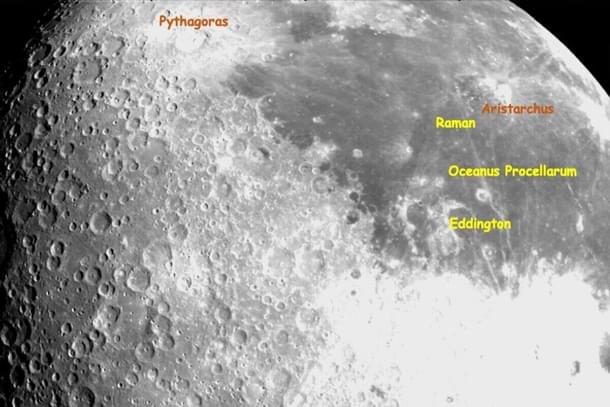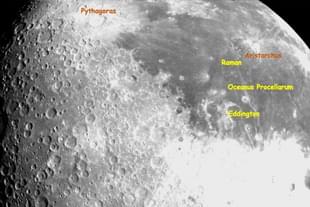Science
Here's How ISRO Plans To Mitigate Potential Threats In Lunar Orbit Ahead Of Chandrayaan-3's Landing
Abhay Rathore
Aug 10, 2023, 02:00 PM | Updated 02:00 PM IST
Save & read from anywhere!
Bookmark stories for easy access on any device or the Swarajya app.


As the anticipated soft landing of Chandrayaan-3's lander on the lunar surface on 23 August approaches, the Indian Space Research Organisation (ISRO) has conducted a review of the existing space conditions around the moon.
The space agency, which made the document public on 9 August, pointed out that the moon and Mars are currently the most investigated and relatively busier celestial bodies.
Furthermore, it was mentioned that India's Chandrayaan-3 is the newest addition to lunar orbit, and due to a resurgence of interest in lunar exploration, sparked by Artemis missions for moon return and Mars colonization preparations, more vigorous activities are expected around the moon in the coming years.
ISRO stated, “While the previous missions were essentially aimed at scientific explorations, upcoming ventures will likely involve multiple actors of diverse interests, including those primarily driven by resource utilisation for commercial purposes. A better understanding of the environment is needed to formulate reasonable mitigation practices to avoid close-approach threats in planetary orbits”.
The Indian Space Research Organisation (ISRO) confirmed that as of July 2023, six lunar orbiters are currently operational.
The Indian Space Research Organisation (ISRO) confirmed that as of July 2023, six lunar orbiters are currently operational.
The organization further mentioned that NASA's THEMIS mission originally had five probes, two of which have been repurposed under the ARTEMIS initiative. These two probes, now known as ARTEMIS P1 and ARTEMIS P2, operate in eccentric orbits with a low inclination.
The evaluation further detailed that NASA’s Lunar Reconnaissance Orbiter (LRO) follows a nearly polar, slightly elliptical path around the moon. Similarly, the Chandrayaan-2, ISRO's second lunar mission, and the Korea Pathfinder Lunar Orbiter (KPLO) also function in polar orbits at an altitude of 100 km.
In addition, NASA’s Capstone operates in a 9:2 resonant southern L2 NRHO. Its perilune passes over the lunar north pole at an altitude of 1500-1600 km, while the apolune is positioned over the South pole at a distance of nearly 70,000 km.
ISRO has identified two defunct spacecraft in lunar orbit; the Japanese spacecraft Ouna, launched as part of the Kaguya/SELENE mission in 2009, and the Chandrayaan-1, which was launched in 2008.
According to ISRO, all other orbiters have either been relocated from the moon-bound orbital path or have made contact with the lunar surface, either intentionally or due to unsuccessful soft landings. For instance, China's Queqiao, the data relay satellite for the Chang’e 4 mission launched in May 2018, was later shifted to a halo orbit near the Earth-Moon L2 point.
At present, the only active rover is China's Yutu-2, deployed by Chang’e 4 and operating on the far side of the moon. Media reports suggest that Russia's Luna-25, equipped with a lander and rover, is projected to be in a 100 km lunar orbit by 16 August 2023, and is expected to land on the moon's south pole between 21 and 23 August, 2023, according to ISRO.
ISRO stated that India has been actively initiating various projects in partnership with International Organisations such as the Inter-Agency Space Debris Coordination Committee (IADC).
These projects include research focusing on the future development of space object environment in the cislunar and lunar region, with the aim of establishing specific guidelines and best practices to ensure sustainable space operations in these areas.
Abhay Rathore is Staff Writer at Swarajya.





